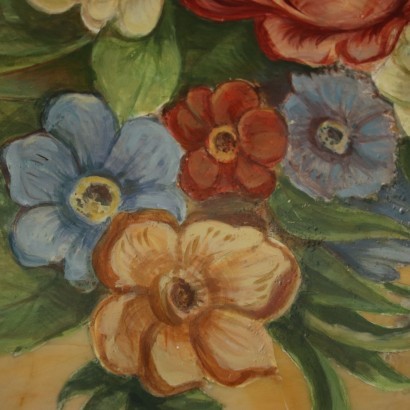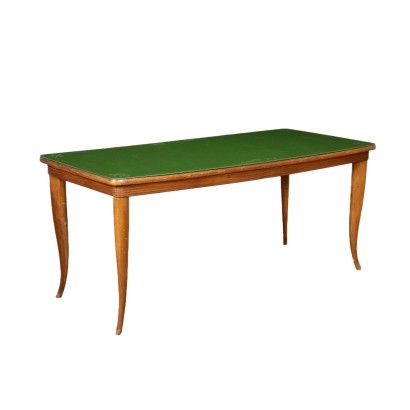Big Neo-Baroque Table Italy 19th Century
Features
Style: Neo-Baroque (1860-1890)
Age: 19th Century / 1801 - 1900
Origin: Italy
Description
Big Noe-Baroque table supported by 4 "C" shaped legs that are richly engraved with curls and leafy scrolls and connected by a curly engraved crossbeam. The undertop band is engraved on the front and on the sides with a central shell from which depart leafy scrolls. The marble top has plaster inserts and painted flowers and it has been replaced later as certificated by the label underneath.
Product Condition:
Fair condition. Wear consistent with age and use. Any damage or loss is displayed as completely as possible in the pictures. Product with a Certificate of Authenticity and Lawful Origin.
Dimensions (cm):
Height: 81
Width: 200
Depth: 100
Additional Information
Style: Neo-Baroque (1860-1890)
Anticipated in England in the first half of the 19th century on the reminiscences of the Elizabethan style, it came back into fashion around 1870, but interpreted in a very free way.It initially represents a response to the frivolity of neo-Rococo, but soon lapses into a pompous and eclectic style that combines severe sixteenth-century elements with sculptural decorations from the early 17th century.
The furniture is solid, richly carved and carved, in dark patina wood.
Garnets, frames, columns carved with herms that make up architectural structures typical of Renaissance palaces, are the elements that characterize the neo-Renaissance style.
It was an era in which we saw the revival and re-proposal of ancient forms with a typically Renaissance taste, large carvings were used for a more complete, deeper and three-dimensional vision, the use of animal paws in chests and wardrobes, squares and moldings, frames, bossages and claws, Romanesque ornamental motifs but also acanthus leaves, cartouches and lion heads.
Often in this period, furniture was built using ancient materials and parts of Renaissance furniture.
Walnut was often used but also less hard essences such as poplar or others since they were often darkened and presented in black.
Find out more with the insights of our blog:
The Neobaroque in a large 19th century table
INSERT ADDITIONAL LINKS
Austrian taste for Baroque
Rococo style in Italy
The Renaissance and its impact on design






































